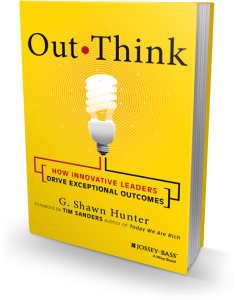Do You Panic or Thrive?
On January 29, 1981, Steve Callahan woke abruptly from a dead sleep in the middle of the Atlantic Ocean on his little 21-foot self-made sloop. There had been a mighty crash. In the seconds before he could stand into action, the boat was already starting to list and fill with water.
Quickly, within a minute or two he was able to deploy his self-inflating life raft and gather a few items as the boat sank. He leapt to his inflatable to discover a couple small airtight compartments within the sailboat were keeping it afloat for a few moments longer.
He made a small joke to himself about how lucky he was, and calmly used the opportunity to swim inside the sinking boat to retrieve some valuable items – a flotation cushion, a sleeping bag, an emergency kit, food, a spear gun, a solar still, and a few other things.
Over the next 76 days, as he drifted 1800 miles west, and as his body became covered in saltwater sores and sunburns, and as his raft was set upon by sharks, and as his radio failed to signal rescue, and as his body deteriorated, each evening he took time to admire the beauty of the night sky.
According to Laurence Gonzales’ Deep Survival: Who Lives, Who Dies, and Why, when disaster strikes, the difference between those who succumb to panic and those who don’t is this:
“They immediately begin to recognize, acknowledge, and even accept the reality of their situation… They move through denial, anger, bargaining, depression, and acceptance very rapidly.”
One thing Steve Callahan remembers vividly from the episode is that he was very calm, hyper-aware, and focused throughout the sinking event from first impact to minutes later as he watched his boat slide under the waves. He can recount his every action. He can play the tape in his mind of every nuance of the event.
Al Siebert, in his book The Survivor Personality, continues this thought:
“The best survivors spend almost no time, especially in emergencies, getting upset about what has been lost, or feeling distressed about things going badly….”
When things go badly, those who survive move away from emotion and toward a state of resolve.
*****
From Paralysis to Resolve
Stress is a response to a trigger. That trigger can be a challenge, a circumstance, a rapidly changing environment, or even a negative thought. But the extent to which the trigger induces distress or positive challenge is largely up to us. How we react to these triggers can be the difference between negative stress and positive challenge.
As Shawn Achor, researcher on positive psychology, puts it “stress is the extent to which an individual believes that the effects of stress are either enhancing or debilitating.”
In Kelly McGonigal’s research over an eight-year period, those people who experience high levels of persistent stress had a 43% higher mortality rate. BUT that was only true for those people who also believed that stress has negative health consequences. For those who embrace stress and use it as fuel to convert into positive pressure, stress has little or no negative health consequences.
Pressure can yield excellence. The difference between those who become paralyzed and succumb to stress, and those who interpret obstacles as something to overcome, is Resolve. Resolve is a mindset.
*****
In 1985 Joe Simpson and his climbing partner Simon Yates decide to climb the massive Siula Grande, located in the Peruvian Andes.
They didn’t climb the conventional route, but instead chose to ascend the never-before-attempted West face of the mountain, which is nearly vertical and covered in nothing but “a sheer layer of ice, loose dirt, flat rock, motorcycle grease, melted butter and used cooking oil.” (thank you Ben Thompson)
They triumph in the climb, but on the decent Simpson suffers a broken leg. Yates belays him down the mountain for hours, and then in a rising blizzard mistakenly lowers him over a cliff into a fathomless crevasse. After an hour, Yates cannot hold the rope any longer and believes his partner is irretrievable. It is impossible for Yates to physically pull Simpson back up to safety. In a moment of personal torment, Yates chooses to save his own life, cuts the rope, and allows Simpson to fall to his death.
But Simpson doesn’t die. He awakens to find himself on his back having survived the 50-foot fall with a crushed knee and destroyed leg. He crawls, limps, and drags himself for three days back to camp.
While hanging on the rope for an hour, in the void, as night was turning to dawn, Simpson recounts:
“A pillar of gold light beamed diagonally from a small hole in the roof, spraying bright reflections off the far wall of the crevasse. I was mesmerized by this beam of sunlight burning through the vaulted ceiling from the real world outside… I was going to reach that sunbeam. I knew it then with absolute certainty.”
The opposite response to stress is confusion and panic. M. Ephimia Morphew, a psychologist and founder of the Society for Human Performance in Extreme Environments, spent some time with her colleagues puzzling over why some novice scuba divers drown while still having plenty of oxygen in their tanks.
The reason, it turns out, is that in a stressful and unfamiliar environment, people often start to hyperventilate because they feel like they can’t breathe. The instinctive response is to remove any obstruction from their mouth. So in a moment of panic, they rip the regulator off their face and suck in a deep breath of the ocean. It’s similar to why those suffering from extreme hypothermia often take off all their clothes in a snowstorm.
The analogy is extreme, but today’s workplace can be stressful and overwhelming. We can often feel as if we are drowning.
*****
A March 2015 survey of 160,000 employees around the world found that 75% of today’s workers experience “moderate” to “extreme” stress. An April 2014 Monster.com survey of more than 7,000 employees found that 42 percent even left their jobs because the workplace was too stressful.
In that electrifying August, 2015 New York Times article, Inside Amazon: Wrestling Big Ideas in a Bruising Workplace – which was later rebutted, and is still today deeply argued for it’s validity – Jodi Kantor and David Streitfeld write:
“Bo Olson was one of them. He lasted less than two years in a book marketing role and said that his enduring image was watching people weep in the office, a sight other workers described as well. “You walk out of a conference room and you’ll see a grown man covering his face,” he said. “Nearly every person I worked with, I saw cry at their desk.”
In a typical stress response, heart rates and breathing increase, and blood vessels constrict. But those people who rise to challenges with the belief that stress is a positive opportunity have an opposite physiological response: the blood vessels open and relax as if they were in a state of elation or preparation for physical test.
Or to put it in Kelly McGonigal’s language, to embrace adversity and challenge with a positive mindset is another way of saying that you trust yourself. It’s another gesture of confidence. And that confidence and resolve will make you much more resilient for whatever arises.
Keep your knees bent my friends.
- Our new Small Acts of Leadership series from Mindscaling helps you put these ideas into action.
- Join my Email updates for regular updates on leadership and life
- Learn more about my Speaking work
____________________________________________________
 Shawn Hunter is Founder and President of Mindscaling, and the author of Out•Think: How Innovative Leaders Drive Exceptional Outcomes. It’s about how to lead joyfully in life, and also to lead cultures in your company to drive great results.
Shawn Hunter is Founder and President of Mindscaling, and the author of Out•Think: How Innovative Leaders Drive Exceptional Outcomes. It’s about how to lead joyfully in life, and also to lead cultures in your company to drive great results.
Twitter: @gshunter
Say hello: email@gshunter.com
Web: www.shawnhunter.com



